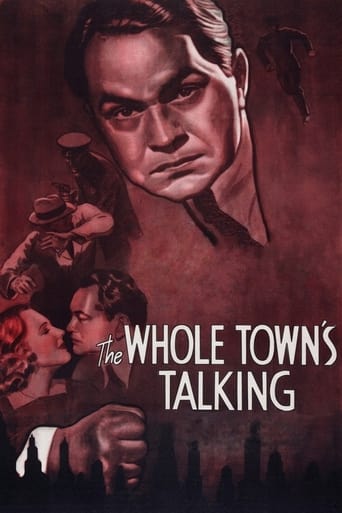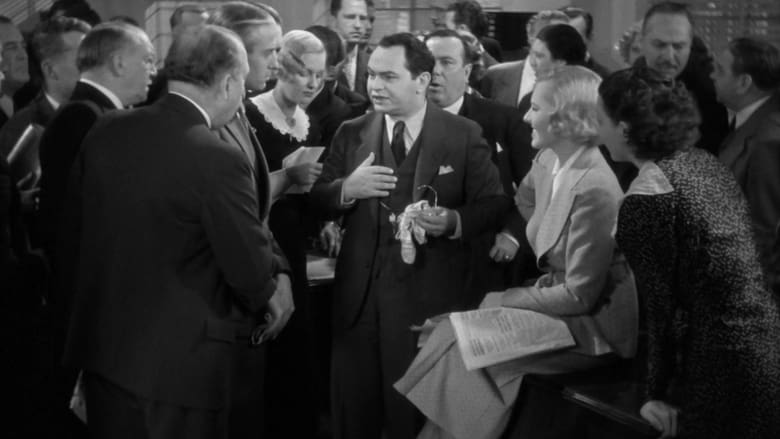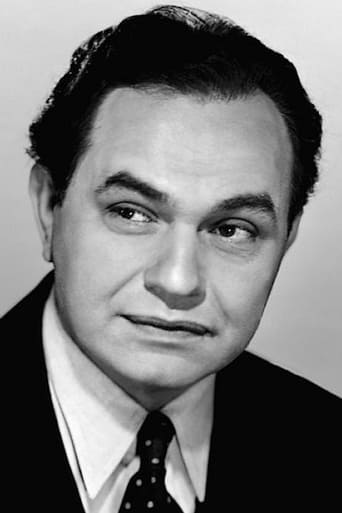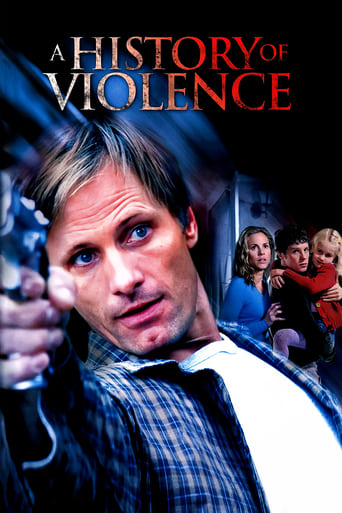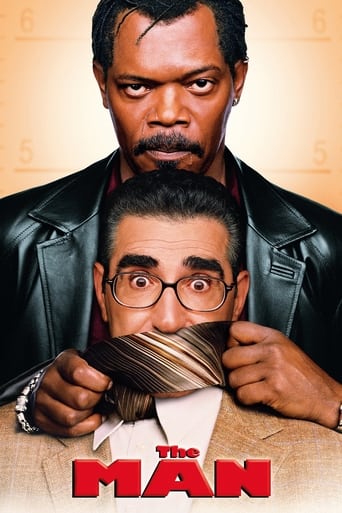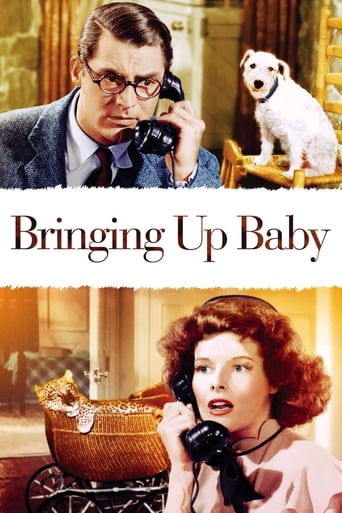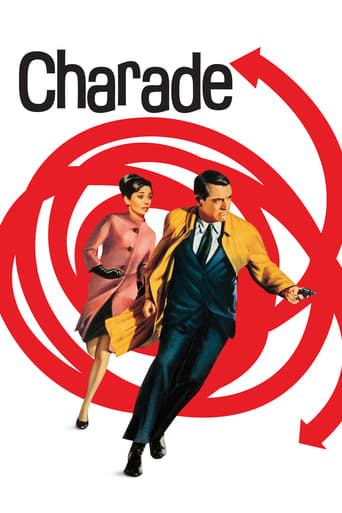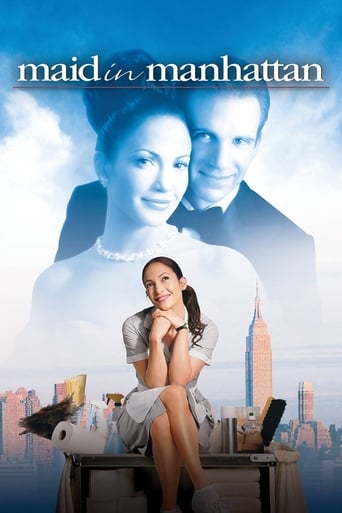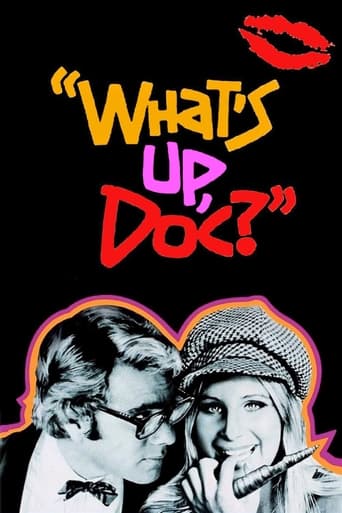The Whole Town's Talking (1935)
Ordinary man-in-the-street Arthur Ferguson Jones leads a very straightforward life. He's never late for work and nothing interesting ever happens to him. One day everything changes: he oversleeps and is fired as an example, he's then mistaken for evil criminal killer Mannion and is arrested. The resemblance is so striking that the police give him a special pass to avoid a similar mistake. The real Mannion sees the opportunity to steal the pass and move around freely and chaos results.
Watch Trailer
Cast


Similar titles
Reviews
Pretty Good
Dreadfully Boring
Although it has its amusing moments, in eneral the plot does not convince.
It's complicated... I really like the directing, acting and writing but, there are issues with the way it's shot that I just can't deny. As much as I love the storytelling and the fantastic performance but, there are also certain scenes that didn't need to exist.
A masterful comedy/drama from Director John Ford filmed during his non-western period. A meek shy and unassuming office clerk named "Jonesy" (Edward G. Robinson) suddenly gains notoriety when he turns out to be a look-a-like for the escaped Killer Mannion (also Robinson). Secretly he is enamoured of fellow clerk, the outspoken Miss Clark (the delightful Jean Arthur). He is then arrested and questioned by the police and District Attorney who think he is Mannion. Eventually he is released and gains fame as the man who looks like Mannion. His boss J.G. Carpenter (Paul Harvey and reporter Beale (Wallace Ford) concoct a scheme whereby Jonesy will ghost write stories (actually penned by Beale) about Mannion.Mannion learns of this and confronts Jonesy in his apartment and decides to take advantage of the situation. Of course confusion by the authorities between the two ensues.Edward G. Robinson gives a stand out performance(s) as Jonesy and Mannion. He makes both characters so believable that you'll think they are two separate people. He plays Jonsey as an everyman caught up in an impossible situation and Mannion as a the cold blooded killer that he is. He's actually pretty scary. The scenes in which both characters appear are so realistic, through split screen and rear projection techniques, that you will think that there ARE two Edward G. Robinsons.The violent aspects of the story take place for the most part off screen such as Mannion's revenge on fellow gangster "Slugs" Martin (Edward Brophy). There are no comedic aspects to Robinson's Mannion character whatsoever.Jean Arthur was just coming into her own with this film and so would go on to greater fame with Director Frank Capra in "Mr. Deeds Goes to Washington" (1936).Ford as ever, injects a little Fordian humour into the story through the detectives Boyle and Howe (Arthur Hohl and James Donlan). Also look for J. Farrell MacDonald as the prison warden, Donald Meek as the reward seeking Hoyt and Joe Sawyer as one of Mannion's hoods. Lucille Ball is supposed to be somewhere in the bank sequence but I missed her.Anyone who ever doubted Edward G. Robinson's acting ability, should see him in this film.
Robert Osborne, the host of Turner Classic Movies, could sell me sand in a desert.I saw that this film was coming on, was intrigued by the fact that it starred Edward G. Robinson and Jean Arthur, two of my favorite actors, and was even more excited after Osborne's introduction of it. But then I watched the movie itself, and nearly fell asleep. It's o.k., but it's certainly nothing special, and fellow Jean Arthur fans should be warned that her credit is a bit of a tease -- she drops out mid-way through the film and is barely even seen in half of it.Edward G. Robinson gets to have some fun playing two characters -- a criminal mastermind and the meek officer worker who just happens to look exactly like him. This premise is meant to be screwball, but John Ford proves that screwball comedy is not his forte.Grade: B-
Three major male figures emerged as stars from the Warner Brothers factory of the 1930s -- Bogart, Cagney, and Robinson. Of the three, Edgar G. Robinson is probably the most underrated. He was adept at tough roles ("Little Caesar," "Key Largo"), mousy characters ("Scarlet Street," "The Woman In The Window") and thoughtful men of principle ("The Stranger").Here he plays both ends of the spectrum of virtue. He's Arthur Ferguson Jones, a frightened and self-effacing clerk at a jewelry firm. He's also the scowling, murdering gangster on the lame named Manion, a more subtle version of Caesar Enrico Bandello.Since the two look almost identical, when Manion breaks out of the slams, the police are on the lookout for him and arrest Jones instead. It takes a long time to iron out the mistake, which reduces the terrified Jones to a neural shambles. "I tell you, my name isn't Jones, it's Manion. I mean, it isn't Janion, it's Mones!" The police finally give him a "free pass" identifying him as Jones and asking he not be molested by the authorities. But then Manion shows up, threatens to kill Jones, and confiscates the free pass every night to continue his scurrilous activities. After that, it really gets complicated.Excellent support is provided by the professional cast, including Jean Arthur in the role of the sassy blond who eventually realizes she, who has been scoffing at Jones' tentative advances, is really his princesse lointaine and he is the guy she truly admires and cares for.It's a little long. And it seems every possible permutation of the mixed identity plot has been explored. The idea itself is hardly fresh. It was the subject of Shakespeare's first play and goes back to the Masques of Ancient Greece.But Robinson is so good in both roles that it's an enjoyable and often funny story. You wouldn't know it was directed by John Ford if you hadn't already known it. (There is only one comic drunk scene.) Robinson enjoyed working with Ford and, in his memoirs, he writes that his friendly working relationship continued with "Cheyenne Autumn."
I saw this movie a long time ago as a teenager during a Edward G. Robinson retrospective. It was the one that stuck in my mind, and I never forgot it. Now I have it on videotape and watch it regularly, it stands multiple viewing very well.The Whole Town's Talking is one of those perfect little movies. Everything falls into place the acting, the pace, the timing of the jokes, the dialog. Even the set design is fabulous, it was basically the big, bright office space in which the good guy Robinson plays slaves" that was unforgettable to me. The movie boasts an assortment of caricature like characters like no other movie I know, beside Robinson I would like to mention Jean Arthur, of course, and the two funny little guys, Donald Meek and, even more memorable, Etienne Girardot as the pedantic office overseer who urges Robinson to get on with the Macintyre account.In its social comment The Whole Town's Talking reminds me of the work of Preston Sturgess. Mentionable are the media hype about a famous gangster which is really over the top (it's up there with His Girl Friday in this aspect) and the incompetence of the police force which is unable to deal with the gangster and even less with the media and is presented as a helpless and clueless organization. So the movie still has some actuality.Movie buffs who look at John Ford as an auteur" may be disappointed. The Whole Town's Talking is very much a product of the studio system. But it amply shows what great things that system was able to accomplish at times!

